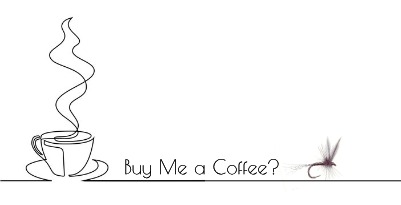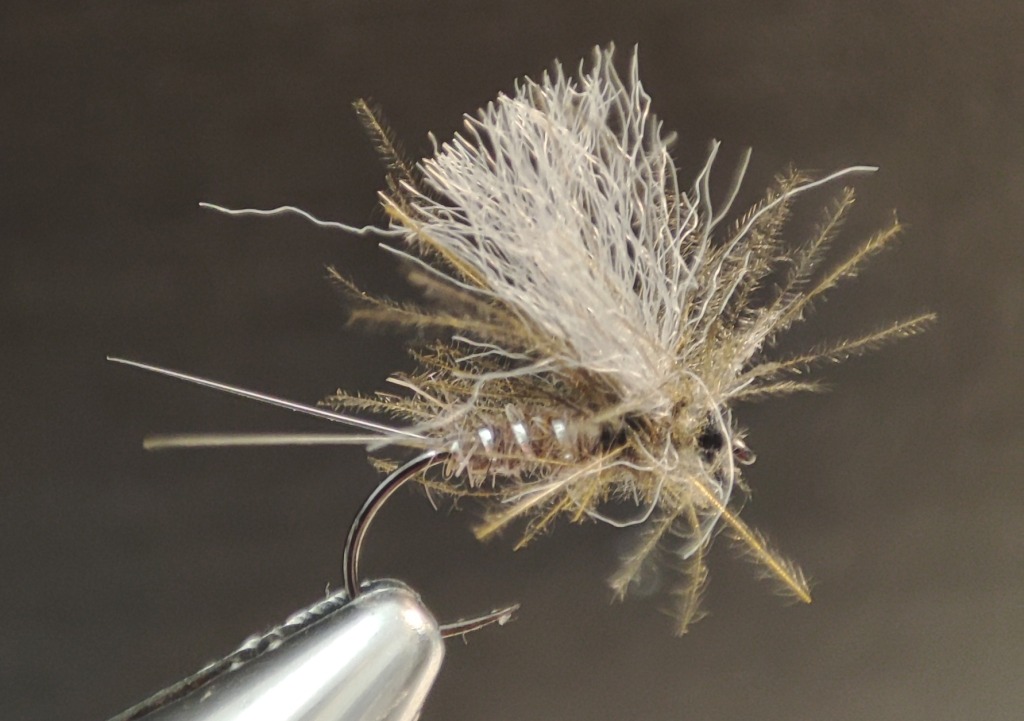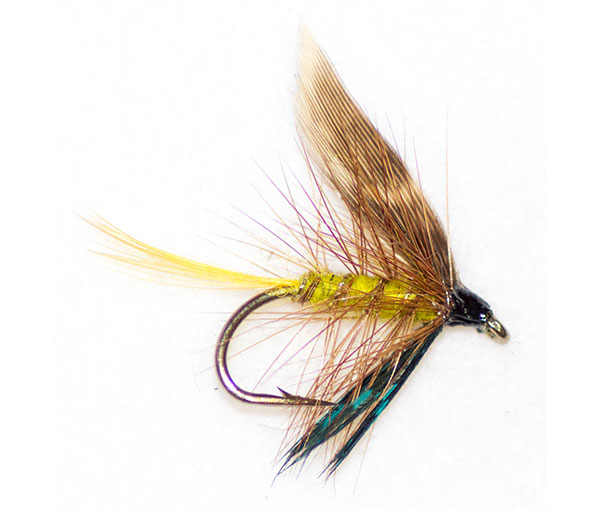With little opportunity to fish I am obsessing about flies again, forgive me:
If you have ever looked at the face of the “The Man in the Moon”, seen roaming camels in the clouds or been blacklisted for your sexually explicit explanation of an ink blot test then you understand the concept of pareidolia.
Pareidolia, “is the tendency for perception to impose a meaningful interpretation on a nebulous stimulus, usually visual, so that one sees an object, pattern, or meaning where there is none.”
Somehow or other, we have this innate, built in program that prefers to see order in disorder, to effectively see things which are not really there.
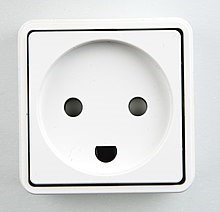
Of course, one cannot be sure that these aberrations apply to other creatures, but it doesn’t seem outside the bounds of possibility that it does, and in this instance, that it applies to fish. Could it not be an explanation for their consumption of less than perfect artificial flies that they simply see what they want or expect to see?
After all, many if not most of the popular flies used by anglers across the globe are generalist at best. Near universally accepted as productive patterns, The Comparadun, Humpy, Adams and Hare’s Ear or perhaps even more remarkably the Royal Coachman? Why on earth should the Royal Coachman, or Royal Wulff be listed constantly amongst the “top ten dry flies” or similar lists? When they bear not even passing resemblance (in our eyes) to anything living, and some might suggest should be allowed to live for that matter? (My personal belief is that the Royal Coachman quite likely and accidentally imitates the segmented body of an ant well enough to be mistaken as such)
So, much as I might be offended, were anyone to suggest that my lovingly fashioned artificial flies were “nebulous stimuli” the chances are that that is EXACTLY what they are, more to the point, I figure that the more nebulous the more likely that the fish might see in them what it is expecting to see.
Fly anglers and fly tyers have been obsessed for years with the concept of exact or close copy of the insects they seek to represent. It has been an obsession and one that has been both widely and to my mind foolishly accepted for decades. And yet, the most cursory glance at real insects and their supposed imitations must surely reveal that a close copy is pretty much an unobtainable standard, and exact copy absolutely impossible to achieve.

I have been recently re-reading “Sunshine and the Dry Fly” by J.W Dunne, it is a tome viewed as near prophetic in fly fishing circles. Given the date of publication, 1924, and the limited materials available one cannot but admire the efforts this man put in to understanding dry fly imitations. He would frequently give up his fishing to capture specimens and rush them back to his home for closer study. (He obviously had a lot more time to devote to fishing than most of us do)
Take for example his obsession with the colour of the artificials. Sunshine and the Dry Fly, Chapter III, The Blue Winged Olive: “I obtained from the manufacturer of artificial silks, what is known as a “shade card,” containing one hundred and thirty-six different shades of material. But even with all these to choose from, it was obvious from the first that I should be obliged to blend.
What that meant to Dunne, was to separate fibres from different swatches and mix them up to provide an”exact recipe” which could then be copied by others. Obsessed, but at least not selfish. For example: Dark Mayfly (female) Hook 7, Body 5(298A) +2(226) +2 (218), Tying silk M.2. .. etc. The body refers to a mix of five strands from swatch 298A, two from swatch 226 and two more from swatch (218)..
Surely, if such close imitation of the colour, never mind structure, legs, wings, body shape and all the rest, were remotely necessary none of us would ever catch a single fish. Modern fly tying has only partially escaped this notion, the absolute obsession with close copy artificials, and I confess, that as I read through the book, doubts as to whether I had the right colours in my fly box started to percolate to the fore, raising doubt in my mind. It has been such a long held belief that it really is difficult to shake off. And Dunne’s writing, is so assured, so compelling, that it is easy to get caught up in his zeal.
But could the concept of pareidolia perhaps provide more useful insight as to what we might aim to achieve in terms of our artificial patterns? Could it be that flies designed to be “all things to all fish” may prove in general more effective? My thoughts are definitely leaning in that direction. That perhaps the fish sees a loose bundle of fine fibres and “sees” legs and wings, the struggle to emerge, effectively convincing itself of the pattern’s authenticity?
Firstly, there is much evidence that general patterns, are effective much of the time for many anglers in many different locations, even for various species of fish for that matter. To my mind, it is entirely possible that the closer you might get to the imitation of one insect the further you get from its potential imitation of another. Such that generalist patterns might cover far more bases and be in general more effective.
In his excellent book “The Pursuit of Stillwater Trout”, Brian Clarke discusses mostly subsurface patterns in moderate detail. It is a book which revolutionised my personal stillwater fishing some 50 years back, and many of the thoughts within it have stuck with me. However, one of the sections on flies, having given quite detailed instruction on entomology and fly design lists “hedged bet patterns”.
These are traditional wet flies, such as the Mallard and Claret or the Invicta. Flies, which to our eyes represent little in terms of real fly life. However, and no matter that they were designed in an era where many flies were merely expressions of fancy, no doubt manufactured using what materials happened to be lying about, they have stood the test of time. Many UK Stillwater anglers would feel naked venturing out on a summer evening without an Invicta in their box.
It turns out that the Invicta; accidentally perhaps, makes a spectacularly good imitation of ecloding pale sedge (caddis) pupae. This occurs underwater as the adult bursts free from its pupal shuck, a mini underwater explosion of wing buds, legs and abdomen, and the Invicta seems to mimic this exceptionally well. Perhaps therein lies part of the answer, you don’t need to copy something but rather mimic and possibly exaggerate certain features.
Part of the problem for anglers, even those as dedicated as Dunne, is that we don’t really know what trout react to and almost all study revolves around subjective rather than objective assessment. Did the fish take now because you changed flies? Or perhaps it was just a better drift, or the fish didn’t notice the fly the first time or your tippet sank on the last drift? It is extremely difficult if not impossible to assess all the variables and equally all too easy to give way to “Confirmation bias”.
Confirmation bias is: “people’s tendency to process information by looking for, or interpreting, information that is consistent with their existing beliefs.”
So Dunne, happily professes that “The fish was not gut (tippet) shy, but rather colour shy”. I suppose if you are writing a book all about the complexities of fly dressing, it is entirely probable that you are biased against any suggestion that close copy is the wrong approach.
For that matter, in writing this, how much am I influenced by my own beliefs and seeking confirmation that my thoughts are indeed correct. Perhaps they are not?
Equally could it not be that the trout suffers the same affliction, expecting to see food, imagining, legs and wings where there are none, and seeing what it expects to see? Does the fish intentionally or otherwise, merely confirm its own belief that the artificial is indeed edible and react accordingly? Does it see “The Man in the Moon” where he doesn’t exist?
The closest I have managed to get to some sort of “scientifically sound experimentation” has been to fish two flies at the same time, on the same tippet and cast by the same angler at the same fish. One would suppose that given the clarity of the water, both flies are visible to the fish and would notionally have much the same drift characteristics.
Fishing like this with a small parachute dry fly on the dropper and an insubstantial and roughly tied CDC soft hackle on the point I have taken fish after fish, all on the soft hackle. On one notable outing some 64 fish came to the net and only 3 took the dry fly. Now it may well be that the fish prefer to pick off insects in or on the film, rather than high floating artificials, but the soft hackle (again to our eyes) really seems a very poor imitation compared to the lovingly fashions dry on the top dropper. That not withstanding the fish regularly choose the former and eschewed the latter.
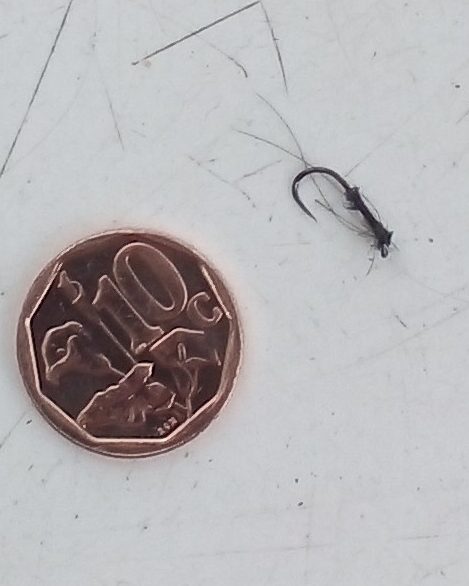
This has happened over and over again to the point of near monotony, the less “imitative” and rather bedraggled pattern has won over the fish.
Bob Wyatt’s book “What Trout Want” agrees, the idea of close copy, the need for numerous patterns to cover every eventuality and the concept of “the educated trout” are at best overstated, in almost all angling literature. As an aside, I do need to comment, that in reading Dunne’s Sunshine and the Dry Fly, his propensity for banging every fish of size on the head, begs the question, how they might ever get the opportunity to become educated in the first place.
I have recently completed filling a new fly box (is there anything that might fill the fly tyer with such expectation and at the same time trepidation?). None of the patterns within boast a single hackle fibre, most rely on CDC, either in split thread or dubbing form to provide both floatation and the illusion of life. Some of those patterns are illustrated above.
I have used similar patterns with great success in the past, but this is the first time I have dedicated a box to them. In the coming season perhaps, we shall see if I am on the right track or if confirmation bias is clouding my judgment and I am seeing things that are not there.
Buy Me a Coffee? The button below allows readers without any obligation to support my work by “buying me a cup of coffee”, I won’t stop writing if you don’t, but it is nice to be appreciated and most blog posts take up about four hours of my time to produce. So if you enjoyed this or found this and other posts informative and of value perhaps consider showing your appreciation
